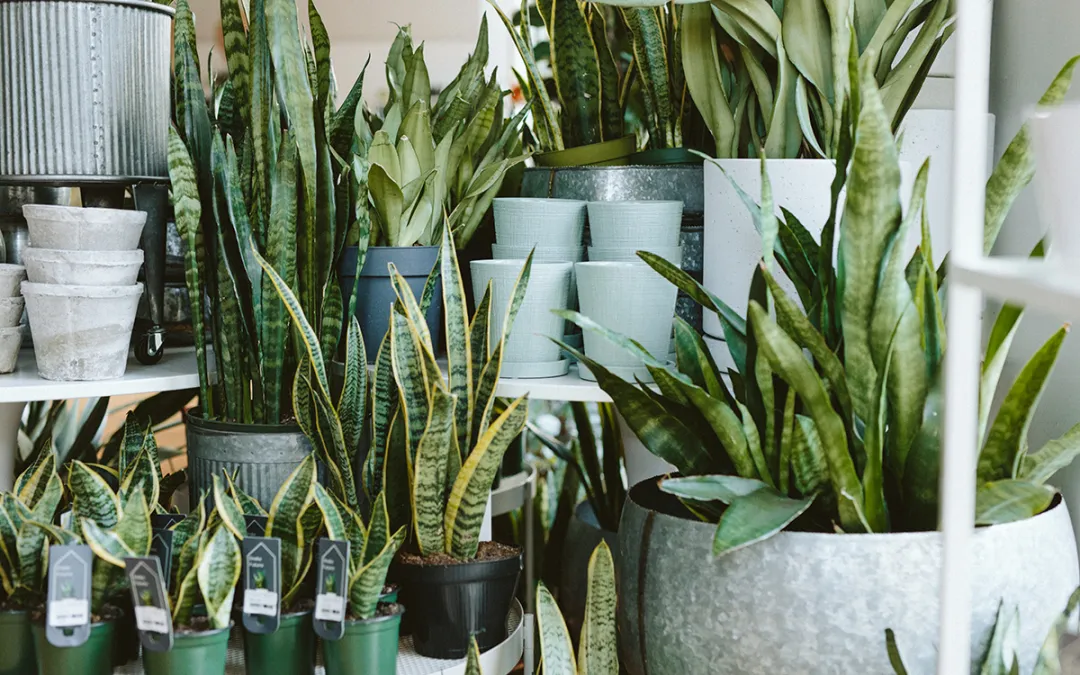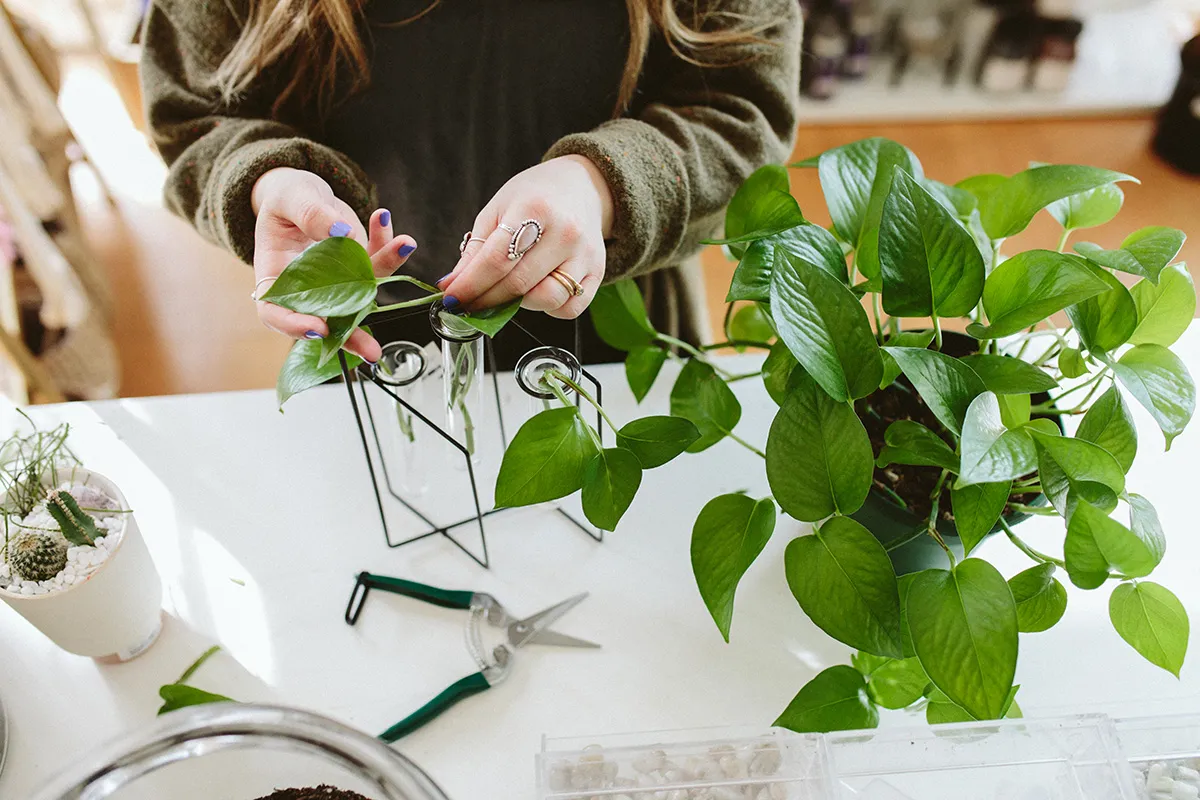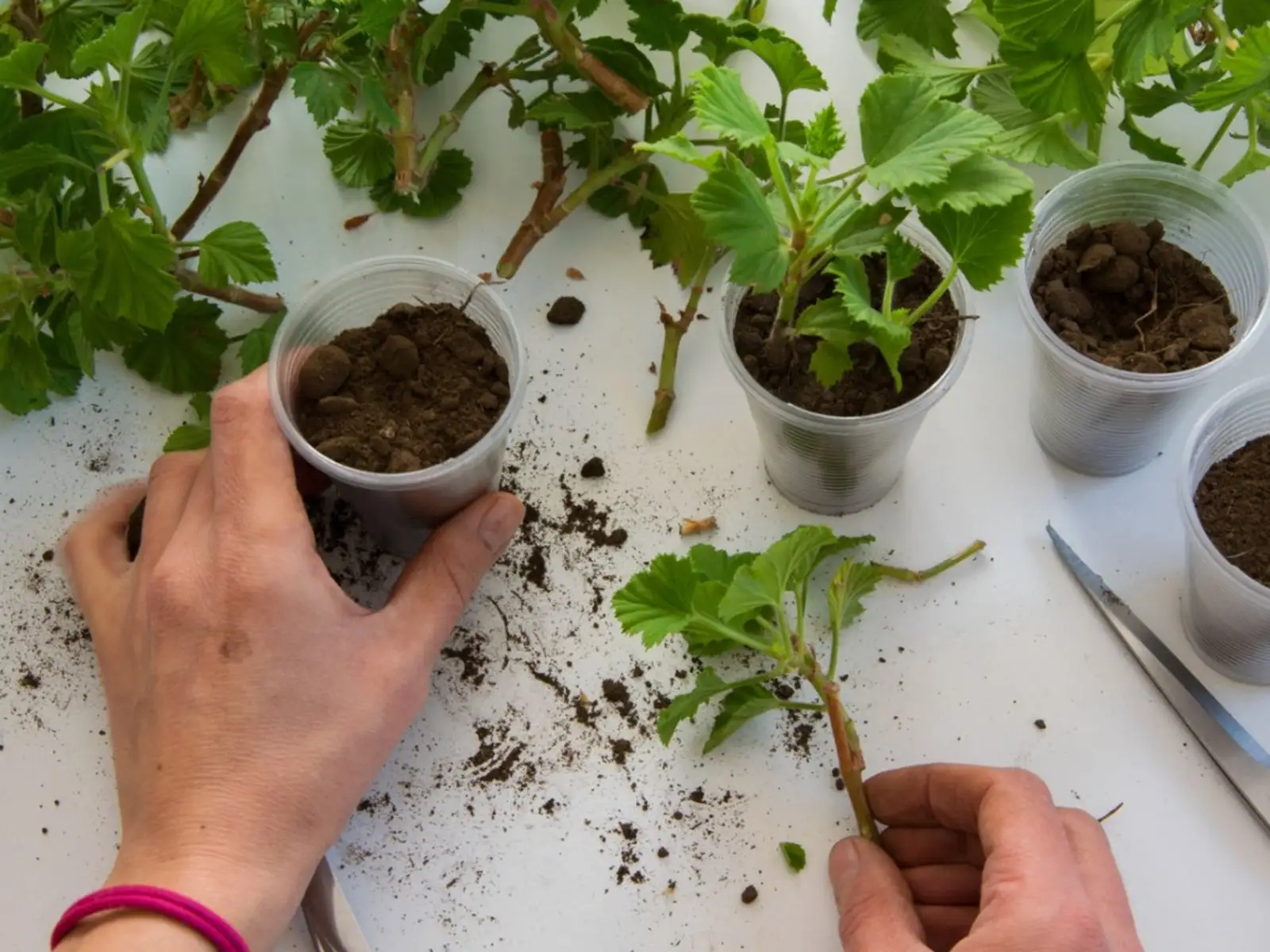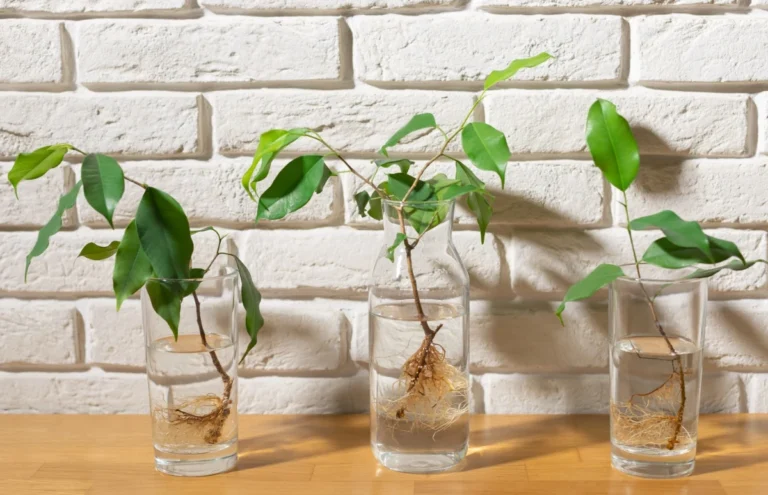Contents
Introduction
If you’re an apartment dweller who loves plants, you probably know how quickly that hobby can grow. With limited space, buying new plants all the time might not be practical—or cheap. That’s where plant propagation comes in. Propagating your apartment plants is not just a cost-effective way to expand your indoor garden; it’s also an incredibly satisfying and fun process that connects you more deeply to your plants.
So, what is plant propagation? In simple terms, it’s the process of creating new plants from the ones you already have. Instead of heading to the store every time you want a new plant, you can use parts of your existing plants—like cuttings, leaves, or even seeds—to grow new ones. This not only saves money but also allows you to multiply your favorite plants, share them with friends, or experiment with growing different types of plants in your apartment.
When it comes to apartment plants, some species are particularly easy to propagate. These plants are well-suited for indoor environments because they don’t require a lot of space or special conditions to thrive. For example, plants like pothos, spider plants, and succulents are popular choices because they’re hardy, low-maintenance, and adapt well to indoor living. Plus, they’re perfect for beginners because they’re relatively forgiving, even if you’re still learning the ropes of plant care.
In this guide, we’ll walk you through the best methods to propagate common apartment plants. Whether you’re just starting out or looking to expand your green thumb skills, this guide will offer practical tips and easy-to-follow instructions. By the end, you’ll not only have a better understanding of how plant propagation works but also be ready to turn your cozy apartment into a lush indoor garden—without breaking the bank.
Propagation Basics
Before you start propagating your apartment plants, it’s helpful to understand some of the basics. Don’t worry—this isn’t going to get too technical. We’re keeping things simple and straightforward, so even if you’re new to the plant world, you’ll be able to follow along easily.

So, what exactly is plant propagation? In a nutshell, it’s the process of creating new plants from parts of existing ones. There are two main types of propagation: sexual and asexual. Sexual propagation involves seeds and is how plants reproduce in nature. Asexual propagation, which is what we’ll focus on here, involves taking a part of the plant—like a stem, leaf, or root—and growing a new plant from it. This method is great for apartment gardeners because it’s quick, doesn’t require a lot of space, and is super rewarding.
To get started with propagation, there are a few key factors to keep in mind to ensure success:
- Light: Most plant cuttings and seedlings need plenty of light to grow, but not direct sunlight, which can be too harsh. A bright, indirect light source, like a sunny window with a sheer curtain, is usually perfect.
- Humidity: Many plants, especially tropical ones, love humidity. Keeping the air around your cuttings moist can help them root more easily. You can use a simple plastic bag or a makeshift greenhouse to trap moisture around your plant.
- Temperature: Plants are like us—they prefer certain temperatures. Most apartment plants root best in warm conditions, typically between 65-75°F (18-24°C). Try to avoid drafts or placing your plants near air conditioners or heaters.
- Soil and Water: Some plants root well in water, while others prefer soil. It’s important to know which medium your plant prefers. For soil propagation, using a light, well-draining mix helps prevent rot. For water propagation, clean water and a clear container to watch the roots grow can make the process more enjoyable.
You’ll also need a few basic tools: a pair of clean scissors or pruning shears, some pots or containers, and maybe some rooting hormone (optional, but helpful for encouraging root growth). With these essentials in hand, you’re ready to start propagating.
In the next section, we’ll dive into the specific methods of propagation. We’ll cover everything from stem cuttings to leaf cuttings, and even more advanced techniques like air layering. By understanding these basics, you’ll have a solid foundation to build on as you experiment with growing your indoor garden.
Methods of Propagation
Now that you’ve got the basics down, let’s dive into the different methods you can use to propagate your apartment plants. Each method has its own unique process, and some are better suited for certain types of plants than others. But don’t worry—once you get the hang of it, you’ll find that propagating plants is both easy and incredibly rewarding.
Stem Cuttings
Stem cuttings are one of the most popular and straightforward ways to propagate plants. Essentially, you’re taking a piece of a stem from an existing plant and encouraging it to grow roots. This method works great for many common apartment plants, like pothos, philodendrons, and spider plants. To do this, you’ll need to cut a healthy stem from the plant, remove the lower leaves, and either place the cutting in water or directly into soil. In a few weeks, you’ll see new roots forming, and before long, you’ll have a brand-new plant.

Leaf Cuttings
Leaf cuttings are similar to stem cuttings, but instead of using a stem, you use a leaf. This method works well for plants like snake plants, begonias, and peperomias. The process involves cutting a healthy leaf and planting it in soil or placing it in water. Over time, new roots and even baby plants will start to grow from the base of the leaf. It’s a simple and fascinating way to expand your plant collection.
Division
Division is a method where you separate an existing plant into two or more smaller plants. This works best with plants that naturally grow in clusters, such as snake plants, ZZ plants, and peace lilies. To divide a plant, you’ll carefully remove it from its pot, gently separate the root system, and then replant each section into its own pot. This is an easy way to create multiple plants from one without waiting for cuttings to root.
Air Layering
Air layering is a slightly more advanced technique, but it’s a great way to propagate larger plants like rubber plants, monstera, and fiddle leaf figs. In this method, you make a small cut or remove a piece of bark from the stem of a plant, apply rooting hormone to encourage root growth, and then wrap the area in moist sphagnum moss or a similar material. After a few weeks, roots will start to form, and you can cut the newly rooted section from the parent plant and pot it up.
Water Propagation
Water propagation is a fun and easy way to grow new plants, especially if you like to see the roots develop. This method works well with plants like pothos, philodendrons, and wandering jews. All you need to do is take a cutting and place it in a glass of water. Make sure the nodes (the part where leaves and roots grow) are submerged, but keep the leaves out of the water. Over time, roots will start to appear, and once they’re a few inches long, you can transfer the cutting to soil.
Seed Propagation
Seed propagation is a bit more time-consuming but can be very rewarding, especially if you’re starting plants like herbs, cacti, or succulents. To propagate from seeds, you’ll sow the seeds in a small pot or tray filled with a light, well-draining soil mix. Keep the soil moist and in a warm, bright spot until the seeds germinate. Once the seedlings are big enough, you can transplant them into individual pots.

Each of these methods has its own charm and challenges, but they all share one thing in common: they allow you to multiply your plants and grow your indoor garden without constantly buying new ones. As you experiment with these techniques, you’ll find what works best for you and your plants, turning your apartment into a thriving green space.
Troubleshooting Common Propagation Problems
Propagating plants is usually a fun and rewarding process, but like any gardening activity, it can come with a few challenges. Don’t get discouraged if things don’t go perfectly the first time—everyone faces some bumps along the way. Understanding common propagation problems and how to fix them can help you succeed and grow a healthy indoor garden.
Root Rot
Root rot is one of the most common issues you might encounter when propagating plants. It happens when the roots of a cutting or a newly propagated plant sit in waterlogged soil for too long, causing them to rot. You’ll notice the roots turning brown or black and becoming mushy. The leaves might also start to yellow or wilt. To prevent root rot, make sure your soil is well-draining, and avoid overwatering. If you’re propagating in water, change the water regularly and ensure the roots aren’t submerged too deeply. If you catch root rot early, you can sometimes save the plant by trimming off the affected roots and repotting it in fresh soil.
Slow or No Root Growth
It can be frustrating to check on your cuttings only to find that they haven’t developed any roots. Slow or no root growth can happen for several reasons, such as insufficient light, low humidity, or the cutting not having enough nodes (the part where roots grow from). To speed things up, try placing your cuttings in a warmer, brighter spot and ensure they’re getting the right amount of humidity. You can also use a rooting hormone to encourage root development. Patience is key here—some plants just take longer to root than others.
Mold and Fungal Issues
Mold and fungal problems can occur when there’s too much moisture and not enough air circulation around your cuttings. You might see fuzzy white mold growing on the soil surface or notice that your cuttings are starting to wilt or rot. To prevent mold, make sure you’re not overwatering and try to provide good air circulation around your plants. If you do spot mold, you can remove it with a cotton swab dipped in a mild fungicide or wipe it away gently with a cloth. If a cutting looks too far gone, it might be best to start over with a new one.
Transplant Shock
Transplant shock happens when a newly propagated plant struggles to adjust after being moved to a new pot or location. You might see the plant drooping, losing leaves, or just not thriving as expected. To minimize transplant shock, handle the roots carefully when transferring your plant, and make sure the new pot has the right soil and conditions. After transplanting, give the plant some time to adjust—don’t move it around too much or change its environment drastically.
These common problems can be a bit of a headache, but they’re also great learning opportunities. Each challenge helps you understand your plants better and improve your propagation skills. Remember, every gardener experiences setbacks, but with a little patience and some troubleshooting, you’ll be well on your way to growing a lush indoor garden full of thriving propagated plants.
Best Practices and Tips for Apartment Plant Propagation
Now that you’re familiar with the different propagation methods and how to troubleshoot common issues, let’s talk about some best practices and tips to help you get the most out of your plant propagation efforts. These tips will help you create the ideal environment for your cuttings and ensure that your new plants grow healthy and strong.
Choosing the Right Time of Year
Timing is everything when it comes to plant propagation. While you can propagate plants at any time of the year, doing it during the right season can make a big difference in your success rate. Most plants are easier to propagate in the spring or early summer when they’re actively growing. During these warmer months, plants have more energy to put into growing new roots and leaves. If you’re trying to propagate in the winter, you might find that the process is slower, and your cuttings may not take off as quickly. So, if possible, aim to do your propagating during the growing season for the best results.
Patience and Observation
One of the most important things to remember when propagating plants is to be patient. Plant propagation isn’t always an overnight process—some cuttings can take weeks or even months to develop roots. During this time, it’s important to keep a close eye on your cuttings and watch for signs of growth or problems. You’ll want to check the moisture level of the soil or water regularly, make sure the cuttings are getting enough light, and look out for any signs of issues like mold or rot. By staying observant, you can catch problems early and make adjustments to help your plants thrive.
Creating the Right Environment
Your apartment environment plays a big role in the success of your plant propagation efforts. Since most plants like bright, indirect light, find a spot in your home that offers plenty of natural light without direct sun exposure, which can be too harsh for delicate cuttings. If your apartment doesn’t get much natural light, consider using grow lights to supplement. Humidity is another key factor, especially for tropical plants. If your home is dry, you can increase humidity around your plants by using a humidity tray, placing them near a humidifier, or even covering them with a plastic bag to create a mini greenhouse effect.
Proper watering is also crucial. Overwatering is one of the most common mistakes new plant parents make, so be sure to check that the soil is only slightly moist and not soggy. If you’re propagating in water, make sure to change the water regularly to keep it fresh and oxygenated.
Experiment and Learn
One of the joys of plant propagation is that it’s a chance to experiment and learn as you go. Not every cutting will root, and not every method will work perfectly for every plant—that’s okay! The more you experiment, the more you’ll learn about what works best in your apartment’s environment and for the types of plants you’re growing. Don’t be afraid to try different techniques or propagate plants that are new to you. Each experience will teach you something new and help you become a more confident and successful indoor gardener.
By following these best practices and tips, you’ll increase your chances of successful plant propagation and enjoy watching your apartment garden grow. Whether you’re looking to fill your home with greenery or share plants with friends, these tips will help you make the most of your propagation journey.
Conclusion
Propagating apartment plants is a fantastic way to expand your indoor garden, save money, and enjoy the satisfaction of growing new plants from ones you already love. By now, you’ve learned about the different propagation methods, how to troubleshoot common issues, and some best practices to ensure your efforts are successful.
Let’s quickly recap what we’ve covered:
You’ve discovered that propagation can be done through various methods like stem cuttings, leaf cuttings, division, air layering, water propagation, and even seed propagation. Each method has its own set of steps, and choosing the right one often depends on the type of plant you’re working with.
We also talked about some common problems you might face, like root rot, slow root growth, mold, and transplant shock. Understanding these issues and knowing how to handle them is key to keeping your propagated plants healthy and thriving.
You’ve also picked up some best practices, like timing your propagation efforts for the right season, creating the perfect environment for your cuttings, and being patient as you wait for your new plants to grow. These tips will help you avoid common pitfalls and increase your chances of success.
Now, it’s time to put what you’ve learned into action. Propagating plants is a rewarding experience that not only enhances your indoor garden but also deepens your connection to nature. Don’t be afraid to experiment with different plants and methods—every attempt is a learning opportunity, and even if things don’t go perfectly, you’ll gain valuable experience along the way.
As you continue to propagate and grow your collection, you’ll find that your apartment becomes a lush, green oasis filled with plants that you’ve nurtured from the very beginning. Whether you’re looking to fill your home with greenery, share plants with friends, or simply enjoy the process, plant propagation is a skill that will serve you well in your gardening journey.
So grab your scissors, gather your materials, and start propagating! Your indoor garden is waiting to grow.



